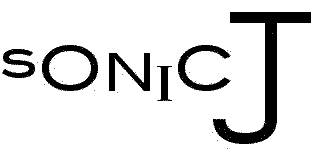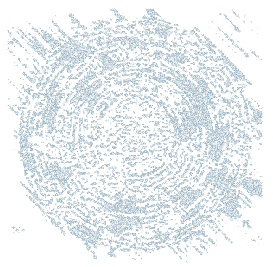The action and voice of the instrument correspond to body movement and sound processing. The action is the body itself, unlike a piano where the action of the instrument is a result of the piano mechanism - the process of pressing the key that moves the hammer which strikes the string. The voice of the Sonic Jumper is extraordinary and is only limited by the user's programming. In other words, it can be as plain or as complex as the musician wants. It is not fixed, and this makes for a very exciting instrument. At the same time, an immense challenge awaits the musician who tries to master the voice of the Sonic Jumper. It is important to note that the artist uses their 'computer skills' along with their musical know-how. In this way, we are asked to redefine the role of the musician.
A very interesting relationship exists between the action and voice. Everyone has experienced the necessity to move the body in certain soundscapes(i.e. in the discotheque or during a community dance). Now imagine that each movement you make has a direct and concrete effect on the soundscape. Can you see the link? Sonic Jumper gives the performer the possibility to mold sound while at the same moment, the human body's physiology reacts to the sound being created. The performer can create a beat while at the same time 'feeling' this beat. Percussionists do this all the time, so what's the point? Imagine more than just a beat and remember the voice of the instrument is only limited by the imagination of the user. There is a circle of cause and effect which is both linear and simultaneous. This continuity can be quite dramatic if broken.
Breaking the circle creates a disruption in time. What happens during these separations? Let's think about Art:
"L'œuvre d'art s'exprime toujours dans une langue topologique" »crit Hermann Broch dans une lettre Aldous Huxley propos de la Mort de Virgile: "C'est seulement par ce moyen qu'elle re¡oit la facult» d'exprimer l'inexprimable, notamment dans la tension entre les vers et les mots, entre les taches de couleur sur la toile, entre les ton musicaux."
"Une langue topologique" refers to a sort of mnemonic code that serves to turn our abstract impressions into something concrete. If we think in terms of time, we use this codification to interpret meaning from event to event: between words; between colours; between notes. The abstract sensation of experiencing a progress from note to note is then converted into a concrete message or sensation.
Both body language and sound have syntax. The syntactical structure is, however, quite different for each and this allows them a particular control over time. From the perspective of the audience, matching or contradicting syntax can create tension. This is not unlike the tension felt by the performer while he works with sound and movement simultaneously, as described above. Sonic Jumper tries to maximize this tension between the action of the instrument and the voice of the instrument.
|

|





